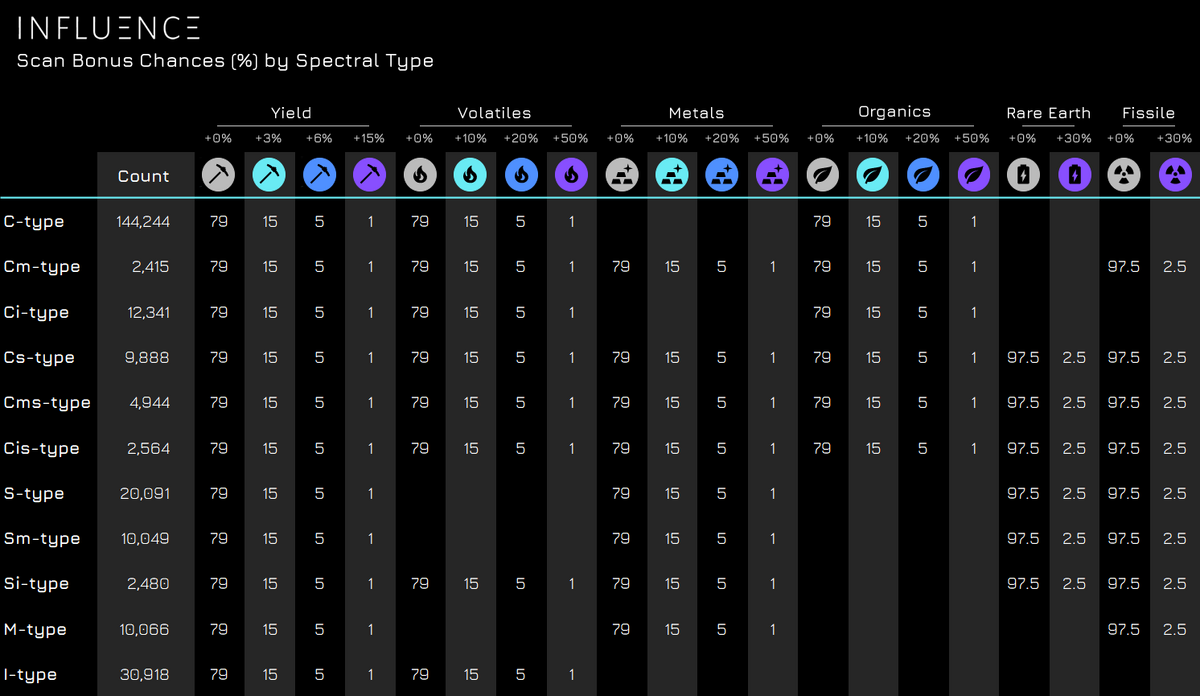¶ Scanning Terminology
-
Long-range scan: the original scan that sets asteroid bonuses and rarity, without the requirement for a ship present (hence long-range). This scan be completed as soon as the asteroid is purchased if not already scanned.
-
Orbital scan: the new scan that sets asteroid raw material abundances and heatmaps, and requires a ship present in orbit (hence orbital). NOTE: Escape modules are unable to orbital scan asteroids.
¶ Scanning Bonuses
After acquiring development rights on an asteroid, the pioneers made use of the scan probes brought along on the Arvad to identify any unique artifacts that may impact resource extraction. Some of the asteroids showed significant abundance for certain resource types and became more valuable in the eyes of miners.
In addition to some asteroids showing a tendency for higher overall yield, there were also specific concentrations of volatiles, metals, organics, rare Earth elements, and fissile materials found. The spectral types had significant impact on the resource concentrations, and the bonuses to resource extraction.
there are six grades of rarity, each with a different approximate chance of rolling said bonuses while scanning asteroids.
- Common: ~50%
- Uncommon: ~35%
- Rare: ~10%
- Superior: ~5%
- Exceptional: ~1%
- Incomparable: ~.1%
¶ Bonuses
There are 6 categories of bonuses. Each of the 11 spectral types has the ability to attain some of the 6.
- Overall Yield: Applies bonus yield to all resources mined
- Volatiles: Applies bonus yield to all volatile resources mined
- Organics: Applies bonus yield to all organic resources mined
- Metals: Applies bonus yield to all metal resources mined
- Rare Earth: Applies bonus yield to all rare earth resources mined
- Fissile: Applies bonus yield to all fissile resources mined
Each type of asteroid has between 2 and 6 bonuses it can attain. These bonuses largely make up the asteroid “Rarity,” along with its size as a factor. Equating to, about 55% of Adalia will be composed of “Common” asteroids that have no bonuses and 45% that have bonuses.
Below is the chart to identify our bonus level have and the % increase in yield specific to the resource group.
